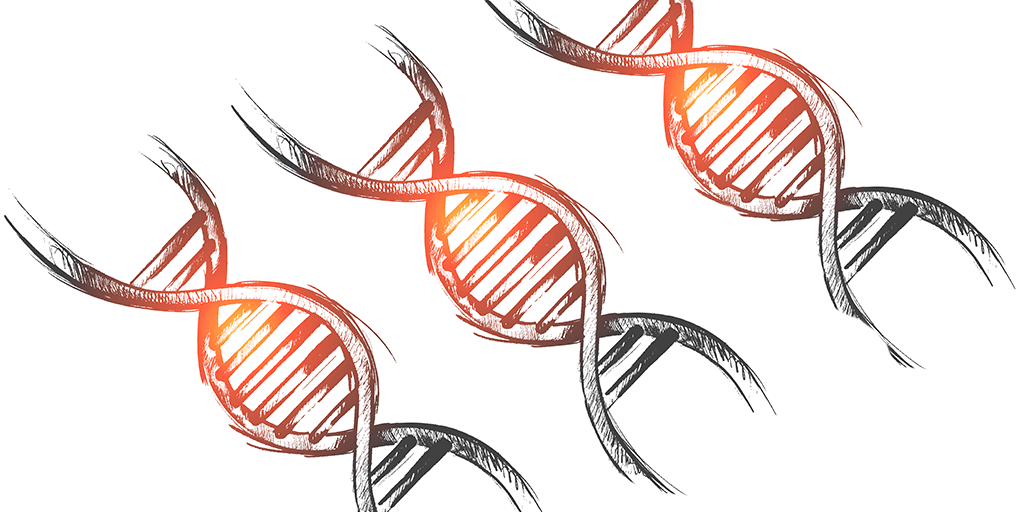What Intelligent Design Is and Isn’t

| By: Jay W. Richards, Beliefnet.com; ©May 13, 2005 |
| The more scientifically sophisticated we get, the stronger the argument for intelligent design. |
Contents
Introduction
Unless you’ve been hiding in a cave, you’ve heard of “intelligent design” (ID) and some of its leading proponents—Phillip Johnson, Michael Behe, William Dembski. Unfortunately, you probably got the mainstream media’s spin. It’s so predictable, I sometimes wonder if reporters aren’t using computer macros.
The reporter types control-alt “CE” and out pops the witty headline: “Creationism Evolves.” Control-alt “Scopes Trope” and out pops a lead referencing the old Spencer Tracy film “Inherit the Wind,” a cartoon-like caricature of the 1925 Scopes Monkey Trial over evolution in the classroom.
Control-alt “Conspiracy” and, presto, a paragraph about the religious right and its scheme to smuggle Bibles into the science class as the first step toward establishing a theocracy. Next comes a quotation supposedly representing the view of all “serious scientists,” with the phrase “overwhelming evidence” thrown in for good measure. The story practically writes itself, and it possesses this virtue: it saves the reporter the bother of actually investigating what design theory really is.
Victor Victorian
So what is ID, really? ID is not a deduction from religious dogma or scripture. It’s simply the argument that certain features of the natural world—from miniature machines and digital information found in living cells, to the fine-tuning of physical constants—are best explained as the result of an intelligent cause. ID is thus a tacit rebuke of an idea inherited from the 19th century, called scientific materialism.
Natural science in the Victorian Age, or rather, its materialistic gloss, offered a radically different view of the universe: (1) The universe has always existed, so we need not explain its origin; (2) Everything in the universe submits to deterministic laws. (3) Life is the love child of luck and chemistry. (4) Cells, the basic units of life, are essentially blobs of Jell-O.
Onto this dubious edifice Charles Darwin added a fifth conjecture: All the sophisticated organisms around us grew from a process called natural selection: this process seizes and passes along those minor, random variations in a population that provide a survival advantage. With this, Darwin explained away the apparent design in the biological world as just that—only apparent.
Each of these 19th-century assumptions has been undermined or discredited in the 20th century, but the materialist gloss remains: There is one god, matter, and science is its prophet. It hides behind its more modest cousin, methodological naturalism. According to this tidy dictum, scientists can believe whatever they want in their personal lives, but they must appeal only to impersonal causes when explaining nature. Accordingly, any who discuss purpose or design within science (the founders of modern science generously excepted) cease to be scientists.
The Universe Strikes Back
There was one problem with this tidy rule. Nature forgot to cooperate. The trouble started in the 1920s when astronomer Edwin Hubble discovered that the light from distant galaxies was “red-shifted.” It had stretched during the course of its travels. This suggested the universe is expanding. Reversing the process in their minds, scientists were suddenly confronted with a universe that had come into existence in the finite past. Who knew! Hubble’s discovery, confirmed by later evidence, flatly contradicted the earlier picture of an eternal and self-existing cosmos. The universe itself had re-introduced the question of its origin to a community bent on avoiding the question altogether.
This was just the beginning. In the 1960s and ’70s, physicists found that the universal constants of physics (e.g., gravity, electromagnetism) appeared finely tuned for complex life. To astrophysicist and atheist Fred Hoyle, this fine-tuning suggested the work of a “superintellect.”
Still more recently, growing evidence in astronomy has revealed that even in a finely tuned universe, dozens of local conditions have to go just right to build a single habitable planet. This growing list of unlikely requirements is only half the story. In “The Privileged Planet,” astronomer Guillermo Gonzalez and I argue that those conditions for habitability also provide the best overall conditions for doing science. The very places where observers can exist are the same places that provide the best overall conditions for observing. For instance, the most life-friendly region of the galaxy is also the best place to be an astronomer and cosmologist. You might expect this if the universe were designed for discovery, but not if, as astronomer Carl Sagan put it, “The universe is all there is, ever was, or ever will be.”
Information Plantation
Of course, even with a suitable environment, you don’t automatically get man or even amoebas. Before the Darwinian mechanism can even get started, it needs a wealth of biological information as part of the first self-reproducing organism. For instance, there’s the information encoded along the DNA molecule, often described as a sophisticated computer code for producing proteins, the three-dimensional building blocks of all life. These, in turn, need the right cellular hardware to function.
In recent years, philosophers William Dembski and Stephen Meyer have turned this evidence into a formidable argument for intelligent design. Dembski, also a mathematician, applies information and probability theory to the subject. Meyer argues that the usual aimless processes of chance and chemistry simply can’t explain biological information and that, moreover, our everyday experience shows us where such information comes from—intelligent agents.
Moving up a level, we find complex and functionally integrated machines that are out of reach to the Darwinian mechanism. Biochemist Michael Behe immortalized some of these in his bestselling 1996 book, “Darwin’s Black Box.”
Behe argues that molecular machines like the bacterial flagellum are “irreducibly complex.” They’re like a mousetrap. Without all of their basic parts, they don’t work. Natural selection can only build systems one small step at a time, where each step provides an immediate survival advantage for the organism. It can’t select for a future function. To do that requires foresight—the exclusive jurisdiction of intelligent agents. That’s the positive evidence for design: Such structures are the sort produced by intelligent agents, who can foresee a future function. If you get this point, you’ve already comprehended more than most journalists writing on the subject.
The New Zoo Review
Moving to the macroscopic world, we see the three-dimensional complexity of many diverse animal body plans (phyla). In the fossil record, these show up suddenly. The problem for Darwinism is not that there are “gaps.” Of course there are. Rather, it’s the entire fossil record’s pattern of sudden appearance of new phyla and persistent morphological isolation between them. This is not the gradually branching tree of life the Darwinian story leads us to expect.
Nor is this an argument from ignorance. In our experience, sudden innovations and massive infusions of information come from intelligent agents. The primary innovations come first (e.g., car, airplane, a new Cambrian phylum) followed by variations on the original form. This is the story the fossil record tells.
The Definition or the Evidence?
At the beginning of the 21st century, we have new evidence and new intellectual tools at our disposal. Standing in the way is the materialistic definition of science inherited from the Victorian Age. If a definition of science conflicts with the scientific evidence, should we go with the definition or the evidence?
To ask the question is to answer it. “Scientia” means knowledge. If we are properly scientific, then we should be open to the natural world, not decide beforehand what it’s allowed to reveal. Either the universe provides evidence for purpose and design or it doesn’t. The way to resolve the question isn’t to play definitional games but to look.
The G-word
Recently, Nobel-prize winning physicist Charles Townes asked, “What is the purpose or meaning of life? Or of our universe? These are questions which should concern us all…. If the universe has a purpose, then its structure, and how it works, must reflect this purpose.”
Townes continues: “Serious intellectual discussion of the possible meaning of our universe, or the nature of religion and philosophical views of religion and science, needs to be openly and carefully discussed.”
Unfortunately, few are willing to follow Townes’ advice. If we talk about ID, we’re warned, someone, somewhere, will start talking about God.
But certain ideas in science will always have theological implications. As arch-Darwinist Richard Dawkins so memorably said, “Darwin made it possible to be an intellectually fulfilled atheist.” Right.
Both Dawkins and Townes agree that ideas in science can have theological implications. Isn’t that obvious? Yet in our current climate, even the bare rumor of God causes some to reach for their stash of derisive terms—“theocrat,” “fundamentalist,” “creationist”—they don’t require much imagination.
But that response rings increasingly hollow. The genie is out of the bottle, and name-calling and misinformation won’t put him back. The mandarins can no longer control the flow of information to those who seek it. The implications can take care of themselves. It’s time to discuss the evidence.
Jay Wesley Richards, Ph.D., is Vice President for Research and Senior Fellow of the Center for Science & Culture at the Discovery Institute in Seattle. He is the co-author, with astronomer Guillermo Gonzalez, of ‘The Privileged Planet: How Our Place in the Cosmos is Designed for Discovery’ (Regnery, 2004).








